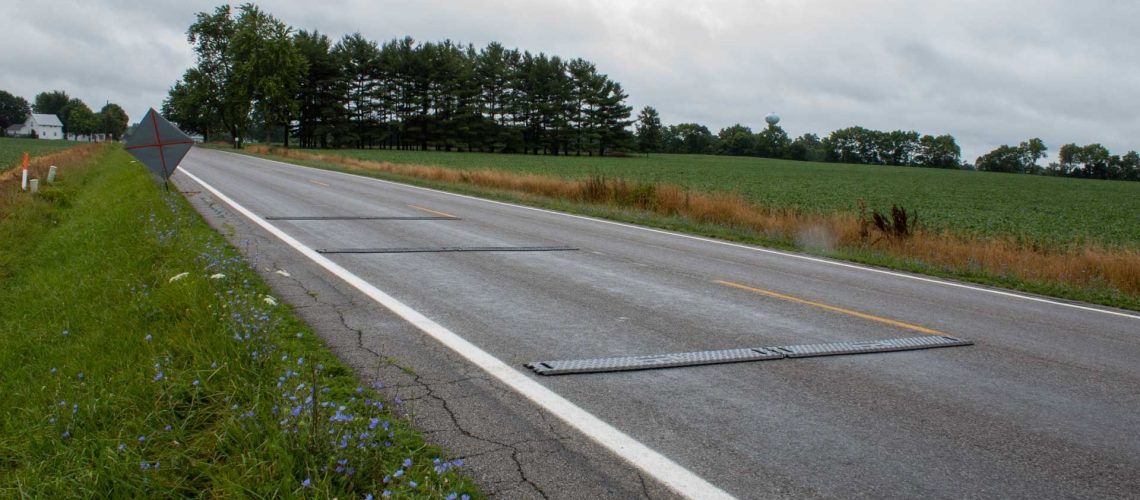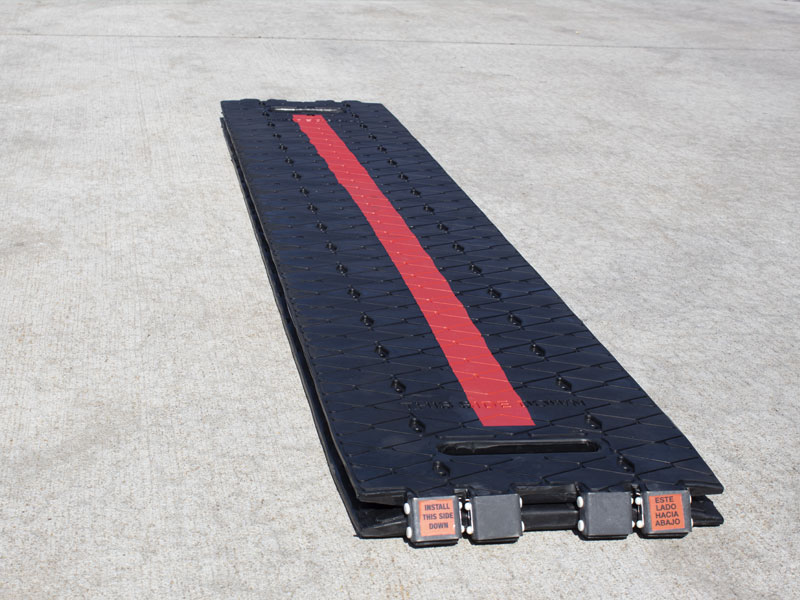- 6001 Elvas Ave, Sacramento
- Mon-Fri 7 AM-5 PM
- (916) 451-5176

You’re on a highway, perhaps a bit tired, maybe a little distracted. All of a sudden, you hit something you didn’t anticipate. There’s a loud sound, a bit of a jolt. A vibration buzzes beneath the wheels. You snap back into focus. That’s the premise behind rumble strips, permanent or portable rumble strips, which do one thing fundamentally: Warn drivers before something goes wrong.
But while the basic concept remains the same, the application can vary greatly. Temporary rumble strips and permanent rumble strips are not interchangeable. Both have their place, depending on the circumstances, the road, and the people the rules are designed to protect.
Rumble strips are grooves or raised patterns cut into a lane or along a shoulder of a road or in the centerline of a road. Their role is to put drivers on notice. They accomplish this through two primary senses: sound and vibration. When your tires roll over the strips, they make a sound and transmit a physical sensation through the vehicle, enough to snap back attention to the road.
They are particularly effective at curbing distracted driving. So many of the top causes of accidents, fatigue, cellphone, zoning out, boil down to the driver taking his or her eyes off the road. Rumble strips don’t prevent those things from happening, but they are a last-moment backup. A safety net.
These are what people would be more familiar with. You observe them slashed into pavement on highways or along the shoulder of roads. They’re generally milled strips, cut directly into the asphalt or concrete. They’re not going anywhere.
Permanent rumble strips are perfect for overall road security. They’re terrific on country roads, where a light shoulder rumble can keep a car from going off the road. They are also used frequently for centerlines, to prevent head-on collisions from drivers who make ill-advised left turns into oncoming traffic.
Crews mill these markers into the pavement just minutes before use, and the existing roadway surface defect creates the elevation or slope change that can lead to a crash. Because the markers sit flush with the road, they resist water pooling and wear. They also last when the road stays in good condition.
But they’re not the right fit for every context. Here is where the portable rumble strips come in.
These are temporary. They go on top of the pavement can often be found in construction or work zones, where lines of travel can change from one day to the following. You don’t install them using heavy equipment. You simply lay them down, typically in a pattern that spans across the entire lane.
What makes portable rumble strips so great is flexibility. Work zones aren’t permanent. Nor are the germs that accompany them. When crews are working a few feet from live traffic, every warning tool is precious. These strips get the job done, but without having to mill the road.
And they can be brought down and picked up very quickly, often in a matter of minutes. And, because they’re reusable, crews can shuttle them between sites as projects move along or change.
In essence, temporary and permanent rumble strips share the same objective: saving lives. They just do it differently.
Permanent strips are for wherever the threat is ever-present – straight, long highways, country roads, those places where people tend to drive when impaired or falling asleep. They prevent accidents over the long haul.
Portable strips, meanwhile, are strictly about being in the flow on varying road surfaces. Consider a construction site where the cones move and the signs change daily. Distracted drivers may not see those changes. A couple of sets of portable rumble strips can snap their attention back before it is too late.
And when you compare them to permanent strips, portable ones, of course, do not have to be installed on the roads. They can be laid down on any paved surface: a highway, an access road, or a temporary detour.

Rumble strips, permanent and portable alike, also work, in the grand scheme of things. Studies have found that they reduce run-off-road crashes, rear-end collisions, and crashes caused by distracted driving.
It’s a constant danger, particularly for construction zones. Construction workers are vulnerable. Frequently, a mere arm’s length from moving lanes. Portable rumble strips provide an additional level of protection, an additional means of defense against unpredictable driver behaviours.
They make the drivers aware before they get to the workers. Before they draw too near to a lane shift. Before they overlook any sign for lane closure or reduced speed.
And when you think about it, those minutes count. Moments of recovered attention can be the difference between close calls and tragedy.
This is a minor thing that’s not minor. The noise and vibration created by rumble strips are not just irritating; they’re designed to be jarring. That is part of what makes them effective.
You can’t ignore it. And that’s kind of the point.
The effect feels more jarring, especially with light rubber portable rumble strips, which rise just high enough above the road for you to feel them. That’s intentional. These bands must stand out because the conditions around them can be transient and even chaotic. Drivers might be maneuvering around new signs, cones, narrowed lanes, or uneven pavement, making distraction easy. The vibration acts like a reset button.
It can sound so appealing to believe that what works in one place can work in every place. But you can’t just make that choice on the roadways.
It wouldn’t make sense to install permanent rumble strips along every road. They are more expensive to begin with, and you have to mill the surface. That can create maintenance problems in some cases, particularly on older or already deteriorating roads.
However, it would be inefficient to base all control efforts in areas of continued risk on disposable strips. They must be hand-set, checked often, and removed when no longer needed. Not every place can maintain that kind of upkeep.
Deciding between the two doesn’t come down to which one is superior to the other or worse. It should be what makes sense for the roadway, for the drivers, and for the people doing work on or near that road.
Ultimately, road safety doesn’t come from just one tool. It’s a layered strategy.
You have signage to inform. Separation barriers. Speed limits control flow. And then there are the jolts like rumble strips – to jolt, to alert, to snag attention when all else fails.
Amid that jumble, portable rumble strips provide a uniquely pliable and prompt response. In construction zones, they are often the last opportunity to warn distracted drivers before something dangerous occurs.
In the meantime, permanent strips work around the clock beneath the radar. No setup, no daily positioning; just long-term defense against the silent threats of fatigue, inattention, or simply human error.
No silver bullet for road safety. But there are smart tools. Rumble strips, portable as well as permanent ones, fall into that category.
They’re not fancy. They don’t depend on high-tech sensors or software. But they work. They reduce accidents. They alert drivers. They protect construction workers. And in numerous cases, they save lives.
Whether they are deployed near the edge of a highway or stretched across an entire lane in a makeshift work zone, the aim is always the same: to remind drivers to pay attention before it’s too late.
Ready to enhance road safety with proven solutions? Contact Capitol Barricade today for reliable portable rumble strips and expert guidance on traffic control products that help save lives.